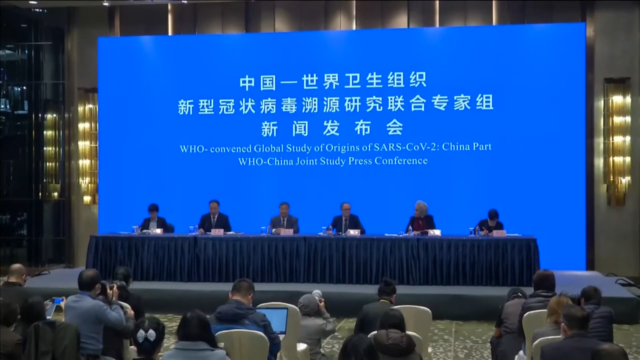NEW DELHI: After more than 100 million documented infections and 2.33 million deaths, the World Health Organisation (WHO) is none the wiser as to what caused the Covid-19 virus. A WHO fact finding team after spending one month in Wuhan, where the virus broke out, absolved China of any blame underscoring that while their findings were at a preliminary stage, current theories about China’s alleged role was incorrect. In the view of Dr. Ben Embarek, who headed the team, there were possibly other factors behind Covid-19.
“There are many things we still do not know about the origin of the virus,” he said at a briefing in Wuhan, “but we carried out a systematic approach and we found that that laboratory hypothesis extremely unlikely and we will not conduct any future work on this hypothesis. As for the bat theory this too is unlikely as Wuhan is not close to the bat population.”
The ‘clean chit’ would have come as a huge relief for Beijing. Prof. Liang Wannian, head of China’s coronavirus outbreak group who was present at the briefing, appeared to underscore the point that “there is no indication the virus was there in China before Dec. 2019.”
The date was important as it directly contradicts the US allegations that China had cases of the virus prior to December and was covering up a possible pandemic. A study by the US Centre for Disease Control and Prevention claimed that there were over 100 infections in 7,389 blood samples collected from nine US states in the time span between December 2019 and January 2020.
“The findings of this report suggest that SARS-CoV-2 infections may have been present in the U.S. in December 2019, earlier than previously recognized,” the study had concluded.
There was more relief for China. Asked about the Huanan Seafood wet market which is believed to have been the origin of the virus, Dr Embarek said he and his team believed that the virus had probably been transferred through wild animals that had possibly come in closer contact to humans from which the virus developed.
“We ruled out the seafood market as being the primary cause for the virus as we found after a through investigation that there were clusters of infected people outside the markets,” said Dr Embarek. “We believe that the increasing proximity of wild animals with humans may be a cause for the virus and this is what we intend to focus on.”
With the China end now closed, it was suggested that the WHO may be looking at other nations. This was confirmed by Dr Embarek. Calling for a global pooling of data he said, “We have identified potential new sources of valuable material that could be analysed and help us move forward. One example is blood samples from blood banks not only here in Wuhan but in other cities and provinces. We should also use that material in other nations where there reports of initial outbreaks to show that the virus was also present in other people in other countries. This will help us get a better picture of the initial days of the event.”
What now? The WHO findings may confirm the view in many of the world’s capitals that it is working at China’s behest and needs a drastic makeover. An online campaign conducted in February last year to get WHO director general Tedros Ghebreyesus to quit gathered 200,000 petitions. He was accused of acting under China’s influence and delaying the notification of the pandemic.
China can be expected to use this WHO certificate to claim that it is the wronged party. It may intensify its campaign to point the finger elsewhere, including India. Last November Chinese scientists claimed that a heat wave in India in July-Aug. 2019 triggered the virus since animals and humans drank from the same water source. Earlier it was Italy and the US. Subsequently other countries were blamed including Australia, Russia and Serbia.
As for who or what caused the pandemic that gutted the world economy, there may be no answers at all.





